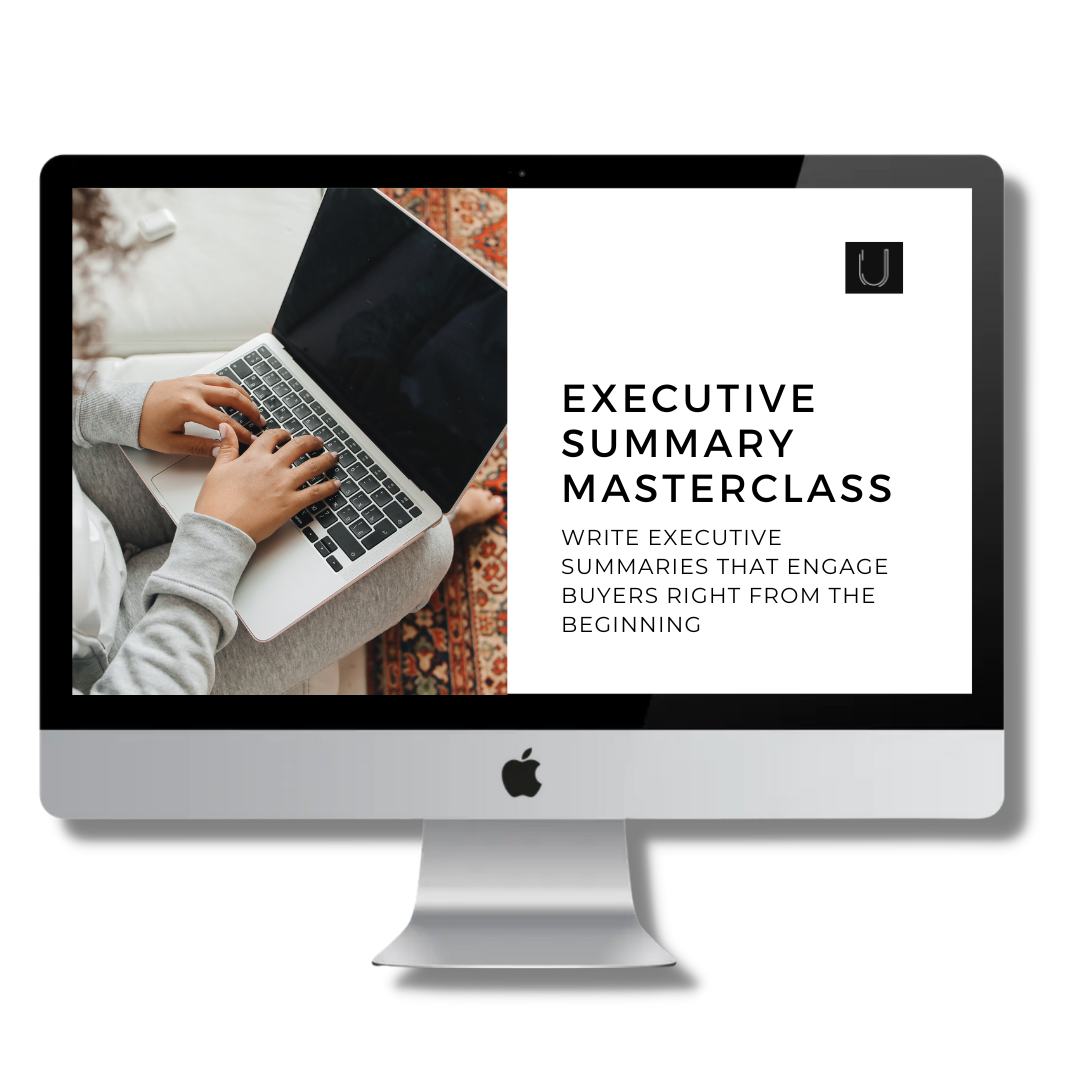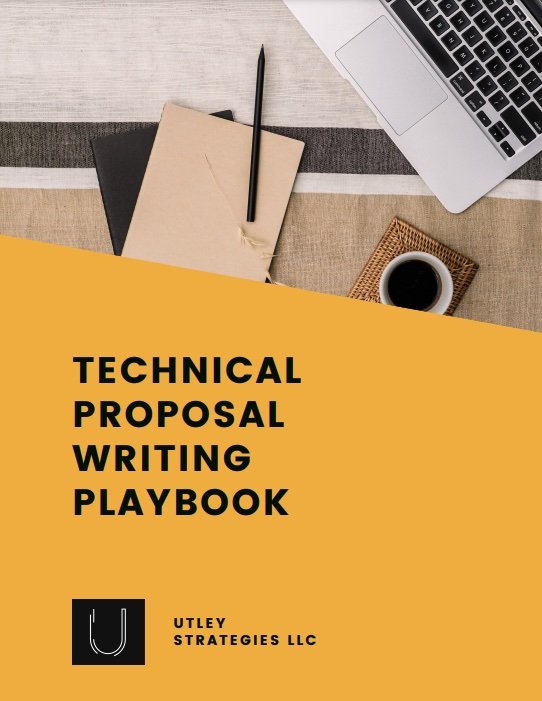The RFP Proposal Format That Works
When you start pursuing larger contracts, at some point you’ll be asked to respond to a formal competitive Request for Proposal (RFP) solicitation. Responding to RFPs can be a time consuming and frustrating process, but fortunately, there are easy steps to follow that can make the process more enjoyable and more successful. Read on for tips on how to respond to RFPs as well as the best RFP proposal format.
What is an RFP?
If you’ve never responded to an RFP before, let’s start with what it is. Companies, government organizations, and nonprofits solicit RFPs for large projects that need to be competitively bid. This essentially means that their internal processes require that they do due diligence before signing a large contract to make sure that whoever they do sign with is the best possible vendor. The two main ways companies award contracts from RFPs is based on lowest price or best overall value (meaning affordability and quality service).
Some people believe that there’s no point in responding to an RFP because the company likely already has a preferred vendor in mind. While it’s true that companies do their research before the RFP phase and the RFP is one of the final steps, many companies (including government agencies and nonprofits) do make decisions based on what they learn as part of the bidding process. So if you’re invited to respond to an RFP, don’t assume that it’s just a pricing exercise. If you follow the steps below and put your best foot forward, you just might win a coveted contract.
Review the RFP
Before you create your proposal format, you’ll first need to review the RFP to determine if they have a specific format you should follow.
Proposal Format Section
If you’re lucky, the RFP will specifically lay out the exact format you need to follow in your response. In this case, all you need to do is follow the outline format in your response and provide the requested information. Make sure you incorporate your strategy to really sell your business.
Some RFPs will have desired content to be provided, but they spread it out across multiple documents. It’s key to review all documents in detail to make sure you don’t accidentally miss a section that they’re using for evaluation.
Evaluation Criteria
If the RFP doesn’t include a format section, the next best formatting option is to align with the evaluation criteria. Many RFPs include a table or breakout with percentages of how they’re evaluating the proposals. If you create your proposal to align with the evaluation criteria, you’ll make it easier for reviewers to evaluate, and it will also force you to create content that speaks to their evaluation topics.
Submission Requirements
Another section that may influence your format is the submission requirements. This section will outline how you need to submit your proposal, such as physical hard copies or an electronic format. Some will require that you submit your pricing information separately or on lines within a submission portal website. If you’re in doubt about how to format your proposal, the submission requirements section can give you insight into what they’re hoping to see in your response.
Creating Your RFP Proposal Format
If you are responding to an RFP that doesn’t provide any information on the format, you can follow the standard format below. Most RFPs request content in these areas, and it’s good practice to include them in your proposal if the only guidance is “send me a proposal”.
Cover Letter
A cover letter isn’t a requirement, but it makes your proposal more formal and creates an opportunity to showcase your company. Within the cover letter, outline the potential client’s goal and how you help achieve it. Begin to showcase why you’re uniquely qualified to work on this project. Include “teaser” content that they can review within your proposal. Have the cover letter signed by a high-ranking individual in your organization.
Executive summary
An executive summary is similar to a cover letter in that it’s not technically always required, but it provides yet another section to connect with the potential client and tell your story. In the executive summary, you’ll outline the client’s existing problem and then provide key points on how your proposed solution will resolve it. The client’s problem might be an industry wide challenge or specific to them. Often the RFP includes an overview of their goals, which describes a problem they need to solve. If you’ve had past conversations with the customer and have insight into what they need, speak to those insights here.
Keep your executive summary to 1-2 pages where possible. Make it very easy to skim, and include only content that sells your solution and speaks to their needs.
Proposed Solution
This section is where you’ll include the bulk of your content. It outlines in detail what you’ll do for the client and your unique solution.
Approach
Within the approach, you’ll highlight the benefits of working with your business specifically. Do you have experience in the industry or use a specific framework to guide your approach? Do you use a proprietary system or toolset? Use this section to describe how easy working with you will be and the benefits of your approach.
Technical Details (Specifications, Services)
The technical details section is where you describe in depth what you’re offering for the client. If you sell a technical solution, here you’ll list out specifications and other technical details with their benefits. If you offer services, outline what you will provide as part of this project. Specifically detail any key deliverables.
Within the technical section, you’ll want to split out the technical work from your process. You could even have the process as a different section if needed. Either way, make sure to include content around your proposed timeline, expected communications, project team, and anything you would need from them.
Qualifications
Now that the client knows what you are offering, they need to know why you are the best choice. In the qualifications section, highlight your expertise, past clients, and any certifications or other factors that make you qualified.
Make this section visually appealing by including breakout graphics with customer quotes, certifications, number of projects supported, and any other key stats.
Project Summary and Pricing
It’s time to share your pricing. You’ll summarize what it is that you’re offering again with price points for each service. It’s best practice to include a simple table with an overview of pricing. You can also include text describing your approach to pricing or anything that’s included that isn’t common practice.
Be specific on the deliverables and expectations. For example, if you work in design, detail the number of revisions included in your rate.
If you have “add-on” services or fees for specific situations (e.g. rush requests, more revisions), include those in a different table below your main pricing.
Key Points of Differentiation/Value Added Benefits
This section is also optional, but it’s worth including on your high-value opportunities. Here you can quickly summarize why they should choose you and any other key points that you haven’t outlined in your proposal already. One way to think about this section is to imagine how infomercials say “but wait, there’s more!” Use this concept to create a final pitch for why they should work with you. Maybe you’re pitching to an environmental nonprofit and you donate 10% of your profits to planting trees--include that here to show that you care about making an impact. Maybe you have a team culture that makes working with you more fun and rewarding. Or perhaps you have exclusive access to discounts on tools they use that you offer to all of your clients. Whatever your value-add may be, include it here as a final benefit to your potential client.
Contract
If you’re responding to a formal RFP, they probably included some sort of contract that you have to review. Some clients are specific that you must use their exact contract with no exceptions, but many allow you to submit redlines as part of your proposal. Make sure to include those here or you might not be able to negotiate the contract down the line.
If no contract was provided, you can propose your standard contract. They’ll most likely respond to say they have to use theirs or try to negotiate with your terms.
MASTER EXECUTIVE SUMMARIES
Executive Summary Masterclass
This one-hour training will teach you everything you need to craft Executive Summaries that buyers love.
Grab your spot to start writing better Executive Summaries today!
3 Tips for Creating a Killer RFP Response
Focus on them, not you.
When creating a proposal, it’s so easy to list out what you do and why you’re awesome. While you should of course include that information, make sure it’s always through a lens of why they should care and what the benefits are to them. Tweaking your content this way will help the potential client to understand why exactly they should work with you, and they’ll appreciate that you care about their needs.
Make it skimmable.
Don’t fall into the trap of including a ton of content that’s difficult to read. Use bullets where possible to make it easy to skim your proposal. Strategically include graphics to showcase a process or point that you describe in the text. Make use of callouts or bolding key points so evaluators can quickly understand your points of differentiation.
Tell a story.
Possibly the hardest one to implement, try to tell a story with your proposal. Keep in mind that organizations are releasing RFPs because they have a problem that they want to solve. Understand that problem and it’s emotional implications, then use your proposal to guide them from pain to relief. Your proposal should elicit feelings of excitement and hope that working with you will create a better future for their business. If you can accomplish this in your proposal, you’re well on your way to winning a new project.
Download the *FREE* Technical Proposal Writing Playbook to improve your proposals today!
Now that you know how to format your RFP and key steps to create a winning response, it’s time to get to work! If you have any questions on how to implement these recommendations, let us know.






